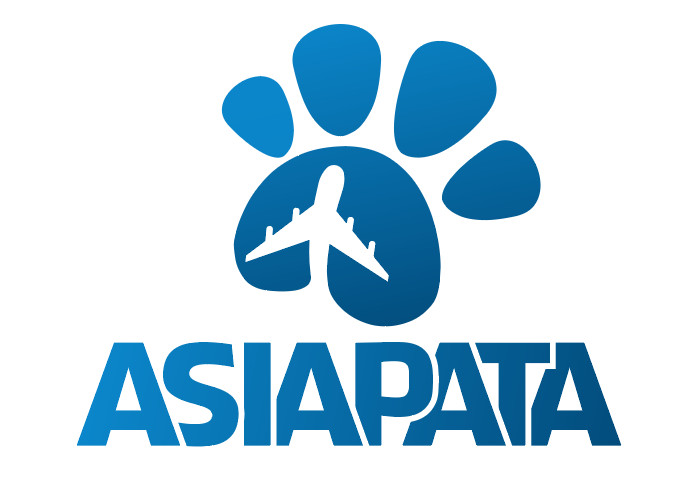Singapore Pet Import Regulations: A Tail-Wagging Guide to the Four Country Groups
Imagine this: Your fluffy French Bulldog, Max, finally lands in Singapore’s humid embrace. No quarantine drama. Just tail wags and beach walks at East Coast Park. But for many pet parents, bringing furry family members to the Lion City feels like decoding a secret code. Fear not! Singapore’s Animal & Veterinary Service (AVS) has streamlined rules into four country groups based on rabies risk. These “schedules” decide if your pet skips quarantine or needs a short spa stay. Updated for 2025, this guide breaks it down simply. Get ready to paw-sitively conquer the process!

Why Singapore’s Rules Matter – And How They Protect Everyone
Singapore is rabies-free since 1950. That’s 75 years of zero cases! AVS enforces strict import rules to keep it that way. Pets must prove they’re healthy, vaccinated, and low-risk. Violations? Fines up to SGD 10,000 or pet re-export at your cost. But follow the steps, and your pet joins 1 in 3 Singaporean households with a furry friend. Pro tip: Start planning six months ahead. Delays in blood tests can derail flights.
Group I: Rabies-Free Havens – The VIP Lane for Pets
Lucky you if your pet hails from Group I. These are the elite: Australia, New Zealand, Republic of Ireland, and United Kingdom (including Northern Ireland). No rabies means zero quarantine. Your pet walks free after a quick airport sniff.
Key requirements:
- Microchip: ISO 11784/11785 compliant, implanted before any vaccines. Scan it at every vet visit.
- Vaccinations: Core shots for dogs (distemper, hepatitis, parvovirus, parainfluenza) and cats (feline viral rhinotracheitis, calicivirus, panleukopenia). Valid for one year.
- Parasite treatment: Anti-flea, tick, and worm meds 2-7 days before flight. Use vet-approved products.
- Health certificate: Issued by official vet within 7 days of travel. AVS template required. Details pet’s age, breed, and residency (6 months or since birth in Group I).
- Import permit: Apply online via AVS e-service 20 days before arrival. Costs SGD 50.
Arrival perks: Direct to Changi Animal & Plant Quarantine Station (CAPQ) for inspection. If all checks out, home by evening. Cost? About SGD 200 for vet fees. Example: A Aussie Kelpie from Sydney arrives stress-free, ready for HDB adventures.
Group II: Low-Rabies Zones – Quick Tests, Short Holds
Group II covers 32 countries with controlled rabies: Austria, Belgium, Bermuda, Canada, Cayman Islands, Cyprus, Czech Republic, Denmark, Estonia, Finland, France, Germany, Greece, Hong Kong SAR, Iceland, Italy, Japan, Jersey, Latvia, Liechtenstein, Luxembourg, Malta, New Caledonia, Norway, Portugal, Slovakia, Slovenia, Spain (except Ceuta/Melilla), Sweden, Switzerland, Netherlands, USA (mainland and Hawaii/Guam).
Here, rabies risk is negligible. But extra steps ensure safety. Quarantine? Often none, or 10-day home stay for some.
Key requirements
- Microchip: Same as Group I. Implanted first.
- Rabies vaccine: Given at least 21 days before travel. Booster every 1-3 years.
- RNATT blood test: Rabies Neutralizing Antibody Titre Test (FAVN or RFFIT). Draw blood 30 days post-vaccine. Send to AVS-approved lab (e.g., Kansas State University). Titer ≥0.5 IU/mL. Valid 1 year. Wait 3 months after sample date to travel.
- Other vaccines: As in Group I, plus leptospirosis for dogs.
- Health certificate: Official, within 7 days. Include RNATT results.
- Import permit: Apply 20 days prior. SGD 50.
For 10-day quarantine option (C1): Vaccine 4 months before, RNATT, then booster. No quarantine if compliant. Home quarantine needs smart collar (SGD 29/day). Arrival: CAPQ inspection, then home or Sembawang Animal Quarantine Station (SAQS). USA pet parents, note: Mainland dogs need this; Hawaii/Guam qualify easier. Total cost: SGD 500-800, including test (SGD 300).
Group III: Moderate-Rabies Areas – Tighter Checks, 10-Day Hold
This group includes nations like Taiwan, South Korea, UAE, and most of Europe/Asia not in II. Rabies is managed but present. Expect stricter scrutiny and mandatory 10-day quarantine at SAQS.
Key requirements:
- Microchip: Essential, pre-vaccine.
- Rabies vaccine: At least twice – initial and booster post-RNATT.
- RNATT: Mandatory, 30 days after first vaccine. ≥0.5 IU/mL titer. Travel 3 months after draw.
- Vaccinations: Full core panel, plus tick-borne encephalitis if from endemic areas.
- Parasite treatment: Comprehensive, 2-7 days pre-flight.
- Health certificate: AVS format, endorsed by official vet. Within 48 hours for air travel.
- Import permit: SGD 50, apply early. Book quarantine slot now – SAQS fills fast!
Quarantine: 10 days at SAQS (SGD 29/day). Daily health checks. Post-release, microchip for licensing. Example: A Shiba Inu from Japan (Group II, but similar) breezes through; from Thailand (III), it’s a short hotel stay. Cost: SGD 800-1,200. Tip: Choose flights arriving before 8pm for smoother processing.
Group IV: High-Rabies Regions – Full Protocol, 30-Day Quarantine

Group IV (or Schedule III in AVS terms) is the toughest: All countries not in I-III, like Vietnam, India, Thailand, Brazil, most of Africa/Asia. High rabies prevalence demands ironclad proof. Mandatory 30-day quarantine at SAQS. No shortcuts.
Key requirements:
- Microchip: ISO standard, first step.
- Rabies vaccine: Series of two, 30 days apart. Booster annually.
- RNATT: Critical. Post-vaccine blood draw to approved lab. Titer ≥0.5. Wait 3 months post-sample.
- Vaccinations: Expanded – include rabies, core, and region-specific (e.g., against leishmaniasis).
- Parasite treatment: Broad-spectrum, vet-certified.
- Health certificate: Detailed AVS template. Issued within 7 days, with all lab proofs.
- Import permit: SGD 50. Apply 30 days ahead.
Quarantine: 30 days minimum at SAQS (SGD 870 total). Vets monitor daily. After, full AVS licensing. Breed bans apply: No Pit Bulls, American Staffordshire Terriers, or hybrids like Bengal/Savannah under 5th generation. Cost: SGD 1,500-2,500, plus flight crate (IATA-compliant). Real story: A expat from Indonesia waited 30 days but reunited with her cat for Singapore’s rooftop views. Patience pays off!
General Rules Across All Groups – Don’t Skip These!
Every pet needs an AVS import license and Customs GST permit (relief for personal pets). Use IATA crates for flights – ventilated, secure. Airlines like Singapore Airlines allow in-cabin for small pets. Book CAPQ inspection 5 days pre-arrival via iFAST portal. From April 2026, appoint an AVS-recognized agent for clearance. Prohibited: Declawed cats, certain exotics. Age minimum: 4 months for dogs/cats. Costs vary: SGD 200-3,000 total, depending on group.
Real-Life Wins: Pet Parents Share Their Journeys
Sarah from Sydney (Group I): “My Cavoodle flew direct. No quarantine – we hit Gardens by the Bay Day 1!” Mike from New York (Group II): “RNATT was a hassle, but 10-day home quarantine meant Zoom calls with my Lab.” Priya from Mumbai (Group IV): “30 days felt eternal, but my Siamese emerged healthy. Worth every form!”
Final Paws: Your Checklist to Singapore Success
- Check your country group on AVS site.
- Microchip and vaccinate early.
- Book RNATT if needed.
- Secure permits and flight.
- Prepare for quarantine fees.
Bringing your pet to Singapore isn’t just relocation – it’s a new chapter of adventures in a pet-loving paradise. With 2025 rules favoring rabies-free zones, more tails are wagging here than ever. Questions? Hit AVS hotline or a relocation pro. Your buddy’s ready – are you? Safe travels, and here’s to sunset strolls at Sentosa!
